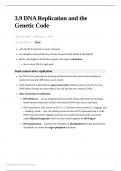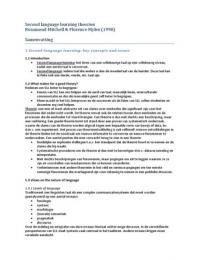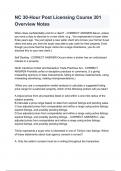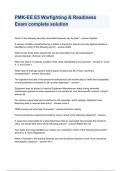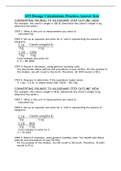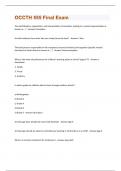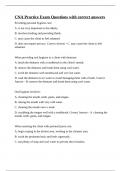Chapter 10: Packing and Materials Handling
Packaging, which refers to materials uses for the containment, protection, handling, delivery,
and presentation of goods, can be thought of in terms of the building-blocks concept, in
which a very small unit is placed into a slightly larger unit, which then might be placed into a
larger unit, and so on.
the building-blocks hierarchy is important to remember because each of the
different building-blocks is inside another, and their total effect should be to protect
the product.
Packaging serves three general functions, namely, to promote, to protect, and to identify the
relevant product.
To properly design a protective packaging system requires three important kinds of
information: the severity of the distribution environment, the fragility of the product to be
protected, and the performance characteristics of various cushion materials.
One of the UN’s recent effort in developing a global system to classify and label hazardous
materials is Globally Harmonized System of Classification and Labeling of Chemicals (GHS).
The GHS provides three key pieces of classification and labeling information: (1) a
symbol, (2) a signal word, and (3) a hazard statement.
When there is a returned packaging loop added to the supply chain we speak of closed-loop
systems, or those that consider the return flow of products, their reuse, and the marketing
and distribution of recovered products.
Dimensional weight (also called dim weight), which considers a shipment’s density (the
amount of space occupied in relation to actual weight) to determine a shipment’s billable
weight.
A unit load (unitization) refers to consolidation of several units into larger units to improve
efficiency in handling and to reduce shipping costs.
handling efficiency can be facilitated by mechanical devices such as a pallet jack or
forklift as well as by using a pallet – an alternative is a flip sheet – or skid.
Some goods are so heavy that they utilize the railcar’s, trailer’s, or container’s weight
capacity without filling its cubic capacity (a situation called weighing out).
Materials handling (also referred to as material handling) is defined as short-distance
movement that usually takes place within the confines of a building such as a plant or DC
and between a building and a transportation service provider.
Cubes out: the cubic capacity is filled before reaching its weight capacity, and the vessel is
lowered to only 20 feet, 6 inches.
Ergonomics refers to the science that seeks to adapt work or working conditions to suit the
abilities of the worker.
In picker-to-part systems, an order picker goes to where a product is located, such as with a
forklift, whereas in part-to-picker systems, the pick location is brought to the picker, such as
with carousels.
Packaging, which refers to materials uses for the containment, protection, handling, delivery,
and presentation of goods, can be thought of in terms of the building-blocks concept, in
which a very small unit is placed into a slightly larger unit, which then might be placed into a
larger unit, and so on.
the building-blocks hierarchy is important to remember because each of the
different building-blocks is inside another, and their total effect should be to protect
the product.
Packaging serves three general functions, namely, to promote, to protect, and to identify the
relevant product.
To properly design a protective packaging system requires three important kinds of
information: the severity of the distribution environment, the fragility of the product to be
protected, and the performance characteristics of various cushion materials.
One of the UN’s recent effort in developing a global system to classify and label hazardous
materials is Globally Harmonized System of Classification and Labeling of Chemicals (GHS).
The GHS provides three key pieces of classification and labeling information: (1) a
symbol, (2) a signal word, and (3) a hazard statement.
When there is a returned packaging loop added to the supply chain we speak of closed-loop
systems, or those that consider the return flow of products, their reuse, and the marketing
and distribution of recovered products.
Dimensional weight (also called dim weight), which considers a shipment’s density (the
amount of space occupied in relation to actual weight) to determine a shipment’s billable
weight.
A unit load (unitization) refers to consolidation of several units into larger units to improve
efficiency in handling and to reduce shipping costs.
handling efficiency can be facilitated by mechanical devices such as a pallet jack or
forklift as well as by using a pallet – an alternative is a flip sheet – or skid.
Some goods are so heavy that they utilize the railcar’s, trailer’s, or container’s weight
capacity without filling its cubic capacity (a situation called weighing out).
Materials handling (also referred to as material handling) is defined as short-distance
movement that usually takes place within the confines of a building such as a plant or DC
and between a building and a transportation service provider.
Cubes out: the cubic capacity is filled before reaching its weight capacity, and the vessel is
lowered to only 20 feet, 6 inches.
Ergonomics refers to the science that seeks to adapt work or working conditions to suit the
abilities of the worker.
In picker-to-part systems, an order picker goes to where a product is located, such as with a
forklift, whereas in part-to-picker systems, the pick location is brought to the picker, such as
with carousels.



